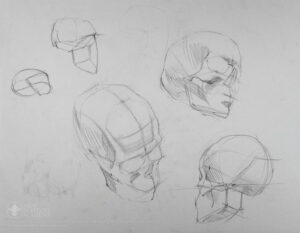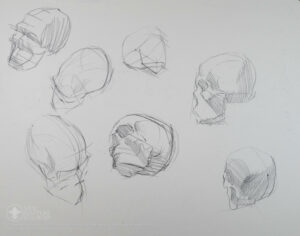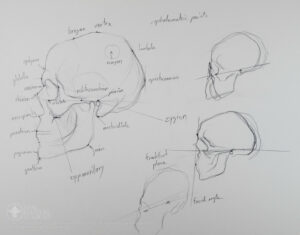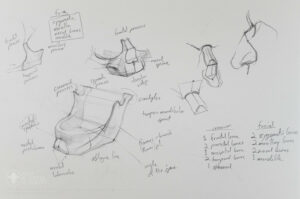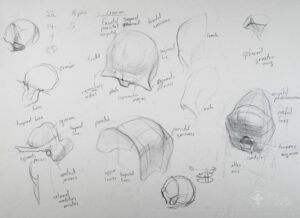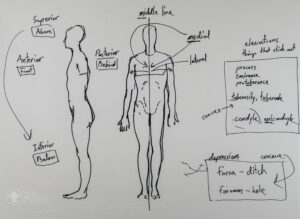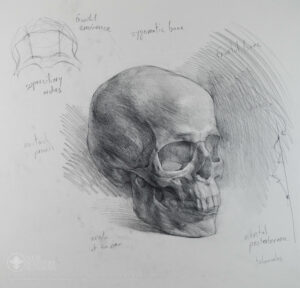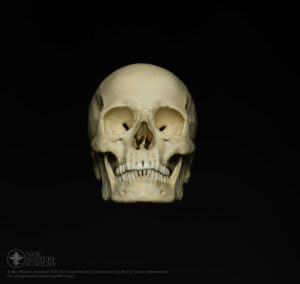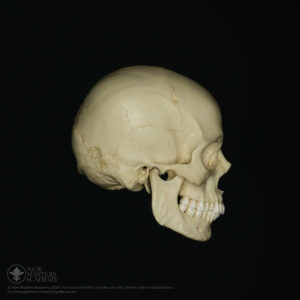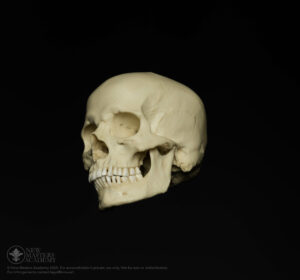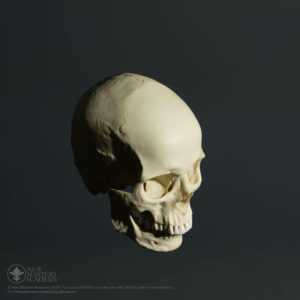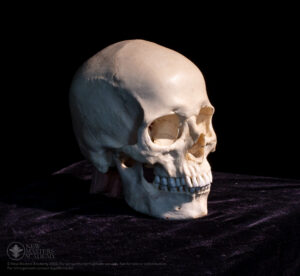- Lesson Details
- References
The skull was a critical part of the learning process at the Repin academy. In this lesson, Iliya will break down the construction and anatomical features of the skull.
You will start with a long pose drawing of the skull. Next, you will learn the anatomical points of the skull to aid in your construction. Finally, you will draw tumbling skulls from multiple directions.
Students are encouraged to work from the NMA reference images and 3D viewer included on this page*.
Join Ukrainian-born artist Iliya Mirochnik as he passes on a 250-year-old academic method preserved at the Repin Academy in Saint Petersburg, Russia and seldom taught outside of the Academy and never before on camera.
The Russian Academic drawing and painting approaches were uninterrupted by the modern art movements that transformed representational art in the West, and as a result, they provide a unique and clear lineage to the greater art traditions of the past. As a powerful approach that is both constructive and depictive, it combines the two methods that prevail in contemporary representational art.
In these three drawing Courses, we have set out to condense the entire program, spanning over eight years into a logical, step-by-step procedure. We have made improvements and added resources and exercises to explicitly drive home the concepts that are required to work in this approach.
We have also structured the course so that it is not only useful for professional and experienced artists but also artists with no drawing experience whatsoever.
In the first part of our Russian Academic Drawing Course, Iliya taught you how to hone your fundamental drawing skills. In this next part, Head & Neck, you will undertake a new challenge: the portrait.
In order to draw the complexity of nature we need to study all the anatomy that makes up the surface form of the head and neck.
Head & Neck covers topics such as the structure of the skull, individual bones of the skull, deep muscles of the face, skeleton of the neck & shoulder girdle, muscles of the shoulder girdle, and the portrait drawing process.
The New Masters Academy Coaching Program directly supports this Course. If you enroll in the coaching program, you can request an artist trained in the Russian Academic Method including Iliya Mirochnik himself. Click here to enroll in the Coaching Program.
Materials
- Sanguine pencil
- Piece of sanguine colored chalk
- Vine charcoal
- Charcoal pencil
- Notebook
- Graphite pencils
- Kneaded and Hard Erasers
- Sanding Block
- Utility Knife
- Roll of Paper, Smooth Sketchbook paper
- Staples
- Staple gun
- Artist panel
- Easel
- Light source

 UPDATE! October 1st, 2023: This version of the website will no longer receive updates. Please transition to the new website for the best experience.
UPDATE! October 1st, 2023: This version of the website will no longer receive updates. Please transition to the new website for the best experience. 

